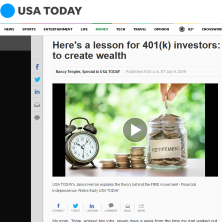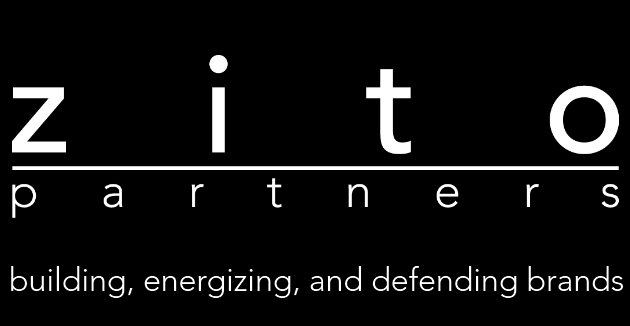 Here’s a lesson for 401(k) investors: Don’t just save, save to create wealth
Here’s a lesson for 401(k) investors: Don’t just save, save to create wealth
My mom, Tobie, worked two jobs, seven days a week from the time my dad walked out on my 10th birthday until she was almost 70 years old. She was grateful for the work – a full-time job as a supply clerk with the U.S. government and a part-time job (evenings and weekends) at Macy’s. In her 70s, after she retired, she worked part-time at the local middle school (until well into her 80s) – insisting, however, that she have Thursdays off for tap dancing lessons.
She saved money, bought savings bonds for her children and grandchildren and paid off her home in the San Francisco Bay Area. If hard work and determination could make one wealthy, my mother would have been a billionaire. But it can’t. You cannot save your way to wealth. You must save to invest to create wealth.
Marilyn Monroe once said: “A wise girl knows her limits, a smart girl knows that she has none.” Most of us are not smart when it comes to investing; we limit ourselves. And that is too bad. Women tend to live longer than men, and a vast majority of us will eventually take over the family finances – we need to be prepared.
Women, who instinctively do more research on every family transaction, tend to make excellent investment decisions. Let’s consider a hypothetical investment in a well-known company: Starbucks (SBUX). (Full disclosure: I own it personally and for my clients.) Importantly, though, this stock provides an interesting lesson for investors.
Let’s say you decided to buy SBUX on April 27, 2007, after it declined 30% from a recent high of $40 a share. The decline in the stock price was due to a decline in same-store sales. An ambitious management team opened too many stores too quickly, cannibalizing sales from existing stores. The stock sold down to $31 a share, which, for sake of argument, is where you bought it. Good news: In December 2007, celebrated CEO and founder Howard Schultz returned to the company, and Wall Street cheered. The stock price rallied. Then the financial crisis hit in 2008. The stock bottomed below $5 a share on Dec. 31. A $31 purchase price seemed foolish.
However, if you are a long-term investor and stuck with your purchase, you would be quite content. Since the bottom around Dec. 31, 2008, the stock is up 2058% versus 314% cumulatively for the S&P 500 (SPX), or 34% annually compared with 14.5% for the SPX. Since April 27, 2007, when you purchased the stock at $31 a share (and before its epic decline to under $5 a share), your return is still a cumulative 548% versus 160% for the SPX. Annualized, SBUX is up 16.6% versus the S&P 500, which is up 8.2% since April 27, 2007.
The lesson? You can work two jobs and save like Tobie. In doing so, you will set an excellent example for your children and grandchildren. OR, you can work hard and save to invest – an even better example. Our SBUX anecdote shows that even during times of severe economic stress, over time great companies generate excellent returns.
Be patient and smart. Buy excellent companies (at a discount if possible), based on your own, unique research, and stick with them when the market gets skittish. You can make real money by being patient and even more if you are willing to commit additional capital during times of economic stress.
View the original post here: https://www.usatoday.com/story/money/columnist/2019/07/09/401-k-starbucks-save-money-to-invest-create-wealth/1673116001/
